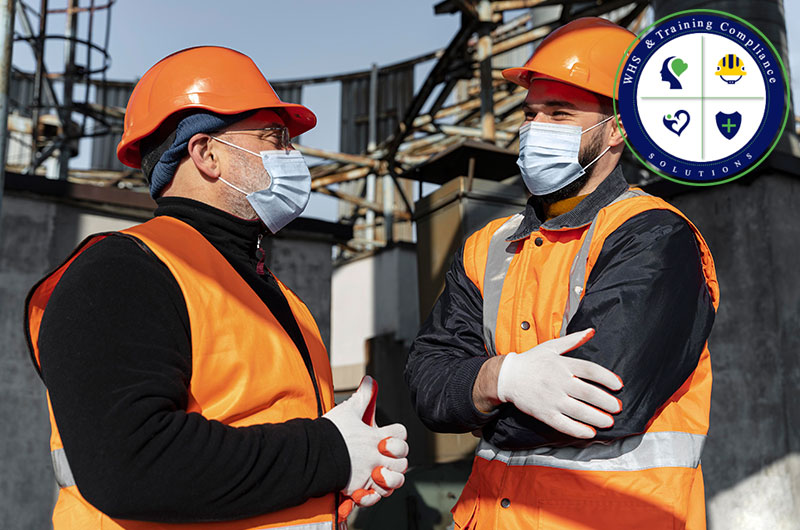Mental health has now become a significant topic of discussion in the workplace. Increasing numbers of employers are understanding that the wellbeing of staff is not a good idea but a business necessity. One of the ways companies are taking care of their people is through Mental Health First Aid, commonly abbreviated as MHFA.
MHFA training equips workers with skills on how to recognise, act, and provide assistance to someone struggling. But the question most businesses ask themselves is in the choice of In House MHFA Training or Public MHFA Training.
The two kinds of training have the potential of producing a healthier workplace. However, they can be used differently, and they can be appropriate to meet various needs. The distinction can help you make a decision that is better for your employees and your company.
This option also falls under the development of a good culture of care and the fulfillment of the work health and safety training in Brisbane or in any other part.
Knowledge of MHFA Training
MHFA training is analogous to physical first aid. It will teach you how to deal with someone who is in some mental distress instead of teaching you how to handle a broken arm or a cut. It encompasses such conditions as anxiety, depression, substance misuse, and even ways to help a person get through the crisis.
Employees are taught how they should listen without being judgmental, comforting, and encouraging professional assistance. This develops a feeling of confidence, minimises stigma, and makes the workplace a safer environment. Colleagues can support each other during times of need, and the managers can respond more effectively with the proper training.
What is In-House MHFA Training?
The company plans House MHFA Training, which will be provided to its employees. The trainer visits you at the workplace, or even through the internet, but the training is for your staff only. This transforms it into an individualised and work-centered experience.
A significant benefit is the possibility of making examples and discussions relevant to your industry. As an illustration, when your employees are in construction, the trainer can direct the conversations around high-stress construction sites. In case you have a team in the hospitality industry, the trainer can point out pressures that are prevalent in customer service.
The other advantage is flexibility. Businesses are able to establish the time, who comes to the session, and change it in accordance with the workloads. Teams are able to learn as a group, and this develops a culture of shared responsibility. When they recognise the group and have the same obstacles, people become more open.
What is Public MHFA Training?
Any person can attend Public MHFA Training. It is usually conducted in a training centre or a hired facility, and members of the different companies participate in small groups. This brings a combination of people, industries, and experiences in the room.
Training in public is practical when there are too few employees to conduct a training session privately. It is also appropriate when the companies desire to train only one or two workers. A small team can be more cost-effective in it, and it has flexibility in registering dates.
Networking is also another benefit. Employees who receive training in the open are usually taught by people who have not specialised in their specific area. They listen to new points of view and exchange stories within various industries, which can expand their knowledge of mental health in other contexts.
What are Their Experience Differences?
The most significant variation between In-House MHFA Training and Public MHFA Training is the degree of customisation. In-house sessions are centered around your working culture, pressures in your daily life, and your policies. This makes it very practical.
Public training is broader. It follows the same standard course, but discussions may not always match your exact workplace. While you are still learning the essential skills, the examples may feel less tailored. For some people, that is fine, as the skills can be applied anywhere. For others, the workplace link is vital.
Another difference is the group setting. In-house training creates a shared language within the team. Public training gives staff exposure to new networks and fresh ideas. Both have value, depending on what your company needs.
The Role of Work Health and Safety
Brisbane and the rest of Australia’s workplaces owe a responsibility to ensure that there is the safety of the employees. This is not only physical risks but also mental health. A lot of companies are considering work health and safety training in Brisbane, which has now been integrated into mental wellness. One of the tools to fulfill this requirement is MHFA.
Providing MHFA, companies demonstrate to the staff that they are concerned about wellbeing. This enhances morale and decreases sick leaves. It also indicates to the regulators and clients that you are fulfilling your duties as an employer. Whether to use in-house or public training is just a matter of finding the most appropriate one.
When In-House Could Be a Good Idea
In-house MHFA Training can be the most reasonable in the case of bigger teams. It will enable you to educate a large audience simultaneously, as well as get everyone on the same level. It also allows you to carry debates into your business culture. In case your workplace has certain dangers, then training in-house can directly solve these issues.
It is also appropriate in firms that seek to include mental health in their wellbeing initiative. This training may be associated with other programs like wellness days, employee assistance programs, or health checkups. This develops an integrated strategy that is more powerful for employees.
Conclusion
There is no one-size-fits-all decision between In House MHFA Training and Public MHFA Training, which will depend on the size of your team, your objectives, and resources. In-house attracts bigger companies, or those that wish to have customised learning for their industry. Public training is applicable to small teams or individuals who desire learning that is flexible and affordable.
The two are worthwhile and both promote the teaching of work health and safety in Brisbane and the wider surrounding. Through the right choice, you are not only crossing a box. You are investing in the health of your employees and creating a healthier working environment, and demonstrating that mental health is as important as physical safety.













